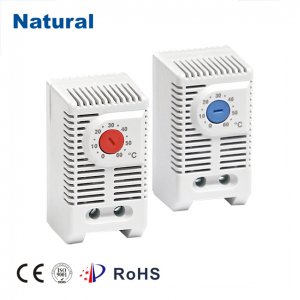In the modern world, where comfort and energy efficiency are paramount, temperature controller thermostats play a pivotal role in regulating indoor environments. These unassuming devices have come a long way in ensuring that our homes and workplaces are always at the perfect temperature, striking a harmonious balance between comfort and sustainability.

The Evolution of Temperature Controller Thermostats The concept of temperature control dates back to ancient civilizations, where simple methods like opening windows or using firewood in stoves were employed. However, it was in the 17th century when Cornelis Drebbel invented the mercury thermostat, which marked a significant advancement in temperature control technology. Over time, these thermostats have evolved into sophisticated devices that are now an integral part of our daily lives. How Temperature Controller Thermostats Work Temperature controller thermostats are designed to maintain a desired temperature within a space. They do so by utilizing a sensor to measure the current temperature and comparing it to the setpoint. Once the sensor detects a variance, the thermostat activates the heating or cooling system to bring the temperature back to the desired level. This cycle continues until the temperature stabilizes at the setpoint, ensuring a consistent and comfortable environment. Energy Efficiency and Cost Savings One of the most significant benefits of temperature controller thermostats is their contribution to energy efficiency and cost savings. By precisely controlling heating and cooling systems, these devices prevent unnecessary energy consumption. For example, during the winter, a thermostat can lower the temperature when occupants are away and raise it before they return, reducing heating costs without compromising comfort. Likewise, during the summer, the thermostat can adjust the cooling system to minimize energy use. Smart Thermostats: The Future of Temperature Control The recent emergence of smart thermostats has revolutionized temperature control in homes and businesses. These advanced devices are equipped with Wi-Fi connectivity, allowing users to control them remotely through smartphones or voice commands. Additionally, they incorporate machine learning algorithms that adapt to users’ preferences and schedules, further optimizing energy usage and comfort. Integration with Smart Homes Temperature controller thermostats are increasingly becoming an integral part of smart home ecosystems. They can seamlessly integrate with other smart devices, such as lighting, security systems, and voice assistants, to create a holistic and efficient living experience. For instance, a smart thermostat can work in tandem with smart blinds to maximize natural heating and cooling, reducing the reliance on heating and cooling systems. Environmental Impact Beyond the realm of personal comfort and cost savings, temperature controller thermostats also contribute to reducing our environmental footprint. By conserving energy, these devices help lower greenhouse gas emissions associated with heating and cooling systems. This aligns with global efforts to combat climate change and move towards a more sustainable future. Conclusion Temperature controller thermostats have come a long way from their humble beginnings, evolving into sophisticated tools that enhance our comfort, save us money, and reduce our impact on the environment. As technology continues to advance, we can expect even more intelligent and energy-efficient solutions in the realm of temperature control. So, whether you’re managing the climate in your home or business, remember that behind the scenes, a temperature controller thermostat is working diligently to provide the ideal environment you deserve.